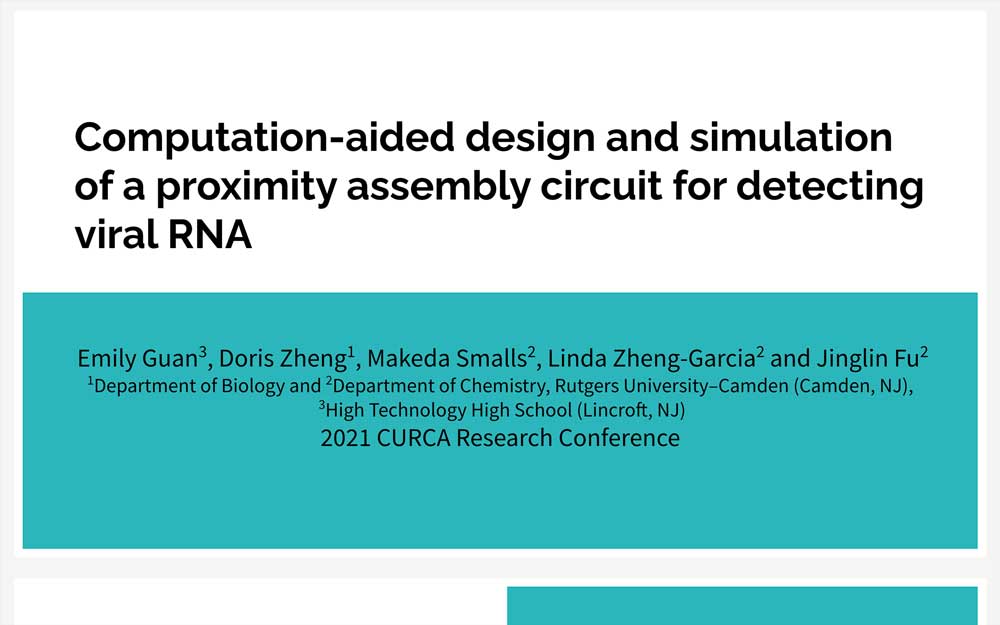Emily Guan (High Technology High School Student), Makeda Smalls ’21, Doris Zheng ’21, and Linda Zheng-Garcia ‘21
Majors: Chemistry (Makeda and Linda), Biology (Doris)
Minors: Business Administration and Chemistry (Doris)
Affiliations: Delta Phi Epsilon Sorority, Omicron Delta Kappa, Honors College (Doris)
Faculty Mentor: Dr. Jinglin Fu, Associate Professor of Chemistry
Abstract
Development of rapid and sensitive nucleic acid detection is critical for monitoring and containing viral infections, such as the COVID-19 pandemic. DNA-mediated Proximity Assembly Circuit (DPAC) sensors are composed of a catalytic cofactor locked by a DNA hairpin. A target nucleic acid sequence is able to unlock the hairpin through strand displacement, which exposes the cofactor and produces a fluorescent signal. This method of detecting target molecules can detect viral RNA. DPAC sensors were computationally designed and evaluated for SARS-COV-1 and SARS-COV-2.
Target RNA amplicon structures were identified and simulated using NUPACK software. Toehold regions complementary to the 5′ and 3’ end of each probe were designed. Toehold-amplicon binding efficiencies were analyzed using NUPACK software, and the toehold producing the highest efficiency was selected. Using these sequences, the DPAC sensor was designed with Tiamat software. The DPAC sensor is composed of the toehold strand, a hairpin strand, and an enzyme complementary to the hairpin. The sensor was analyzed by titrating amplicon concentrations (0-0.1 μM) in NUPACK. The trigger gain ratio for the hairpin-enzyme complex measured strand displacement efficiency in the sensor. The SARS-COV-1 hairpin-enzyme complex produced a trigger gain ratio of 0.885 at 0.1 μM amplicon, and the SARS-COV-2 hairpin-enzyme complex produced a trigger gain ratio of 0.747 at 0.1 μM amplicon, indicating high efficiency. Both sensors were highly specific when tested with other non-target amplicons.
The computation results provide bases for designing efficient DPAC sensors to detect viral RNA. The sensors can be further validated in experiments for diagnosing coronaviruses.
Preview

